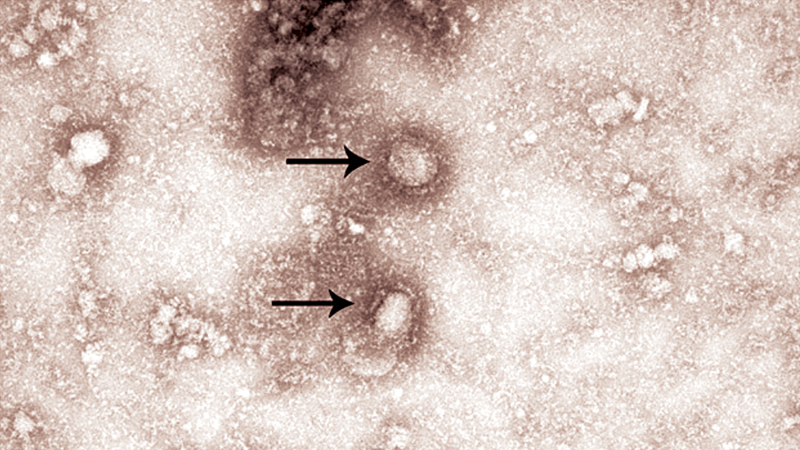Coronaviruses were first identified in the 1960s, but scientists were not aware of its origin. The viruses get their name from their crown-like shape. Sometimes, but not often, a coronavirus can infect both animals and humans.
Different strains of known coronavirus
* MERS (Middle East Respiratory Syndrome) and SARS (Severe Acute Respiratory Syndrome) are the two strains of known coronavirus which were identified with endemic outbreak in 2012 and 2003 respectively. Mortality rates were recorded as 858 by MERS in 2012 and 774 by SARS in 2003.
Wuhan-coronavirus (2019-nCoV)
* The source of the outbreak has been identified as the Huanan Seafood Market in Wuhan, China, which sells live animals and exotic meats and seafood. The virus was first documented in December 2019. Most confirmed cases were linked to the market, but later there have been several cases among people who had no connection to the market. Scientists have now confirmed that the virus can be spread from person-to-person and not just from animals. Experts are concerned that the virus will spread further and more rapidly in the coming days.
* Update: as of January 27, the number of deaths had risen to 106 with more than 2,700 cases confirmed. Planes and trains into and out of Wuhan and buses, subways and ferries in the city have been suspended in an effort to control the virus.
* The new virus, which has never been seen before, is causing severe lung disease in China, with cases also confirmed in South Korea, Thailand and Japan among those who had recently travelled to China.
* The first confirmed case of coronavirus in Sri Lanka was reported on January 26. Health officials confirmed that a 43-year-old Chinese woman from the Hubei province had contracted the virus.
What are the symptoms of coronavirus (2019-nCoV)?
* Flu-like symptoms such as stuffy or runny nose, cough, sore throat, feeling unwell, loss of appetite, aching muscles and fever.
* After three to seven days of these symptoms, patients will develop a dry cough, fever and breathlessness which ranges from mild to severe.
Is it life threatening?
* Severe cases of coronavirus can cause pneumonia, kidney failure and death. Thus far, the survival and recovery of patients is largely dependent on the quality of their immune system. People who have succumbed to the virus so far were reported to have already been unwell or elderly and thus not capable enough to fight the infection.
How does the mortality rate compare with rhinovirus?
* Rhinovirus is responsible for the common cold (known as flu virus) and the annual mortality rate is approximately one percent, whereas the mortality rate for coronavirus is expected to be three times that of rhinovirus.
Prevention
* As we know, there is currently no vaccine available for protection. Hand hygiene, covering your mouth and nose while coughing and sneezing and properly discarding the tissue you have used are important.
* Avoid travelling to the endemic area.
* Hands should be washed thoroughly with soap and warm water or with an alcohol-based hand sanitizer at least for 20 seconds.
* Clean and disinfect frequently touched objects and surfaces.
* Avoid touching your eyes, nose and mouth with unwashed hands.
* Avoid close contact with people who are sick.
* Avoid public places such as carnivals until the outbreak is under control.
* Health professionals must follow the WHO protocol.
Good news
* On January 26, an expert at China National Commission said that one week is sufficient for recovery from mild coronavirus symptoms.
Sources: WHO circular, patient.co.uk, British Medical Journal, CDC, The Guardian, Web med, Al Jazeera, BBC and NHC
(Dr. Muhammad Abdullah Muhammad Jazeem is a specialist in family medicine)
****
Transmission
* It is important to note that the spread of the virus from person to person can vary. Viral transmission is primarily via respiratory droplets produced when an infected person coughs or sneezes, similar to influenza virus (common cold virus).
* A person who is already infected but without any symptoms (in the incubation period) can also be a source of transmission to others.
* The infected person who is within approximately six feet of another or within the room or care area for a prolonged period of time without wearing personal protective equipment is considered to be a close contact.
****
Infectious period after exposure
* The incubation period is currently considered to be up to 14 days and therefore any respiratory illness occurring in the first 10 days following last contact with a person confirmed to have coronavirus is considered relevant and such persons should be isolated and their physicians should be alerted as soon as possible.
****
How is coronavirus identified?
* You could get lab tests, including nose and throat cultures and blood work, to find out whether your cold was caused by coronavirus. The positive lab test results for coronavirus would not change the currently available treatment. The symptoms typically go away in a few days. But infected patients should be isolated in order to control the spread of the virus.
****
Supportive treatment options
* Physicians treat a coronavirus infection the same way a cold is treated. The patient should get plenty of rest, drink ample quantities of fluids and take over-the-counter medicine for a sore throat and fever. But Aspirin should not be taken if the patient is under 19 years of age; Acetaminophen (Paracetamol) or Ibuprofen could be taken instead under the physician’s advice.
* Those with suspected coronavirus may be given breathing support and fluids to stabilise them.
Is there any antibiotic to treat coronavirus?
* As it is a virus, antibiotics are ineffective in treating the infection. Antivirals can be used but they will only reduce the symptoms, not cure the patient.




Add new comment